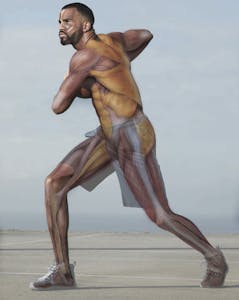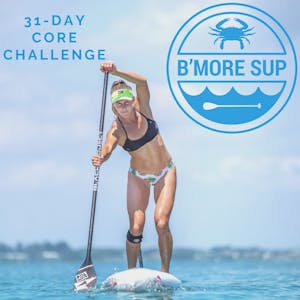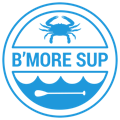Core Strength for Stand Up Paddlers
31-Day Core Challenge
At B’More SUP we believe that in order to be a strong paddle boarder you must have a strong core! So, we have designed a fun 31-day challenge to help you harness the power of your core so that you can utilize all the muscles that make up your core every time you get on your board.

From stability and strength to flexibility and mobility, this 31-day program will work the various muscle groups which help you perform on a paddle board.
Before we get too far down the line, let’s talk about what specific muscles we will be focusing on during this program. We need to remember, your core is NOT just your abs! The core makes up nearly half the body and includes all the muscles that attach to your pelvis and your spine, sometimes people define the core as “everything excluding the extremities.” With that being said, the core is where you gain that extra stroke, get the extra hip hinge and find more rotation in each and every paddle stroke. Your core is what connects you to the rest of your body and stabilizes each stroke (and movement!) you take.

Let’s look at the main muscle groups that make up your core…
- Rectus Abdominis: Your rectus abdominis muscles are what most people think of when they think of their abs. They are long, flat and run opposite to one another along the front of your abdomen, in front of your pelvis between your ribs and pubic bone. These are the muscles commonly referred to as a “six pack.” Yes, the six pack abs look nice, but they are much more important than just looks. They serve the purpose of providing posture to your body and these muscles keep your organs in place by applying pressure when you are performing exercises that involve heavy weight lifting. While you are performing a workout, such as crunches, you are engaging these muscles in flexing the lumbar spine.
- Trapezius: I like to think of the “trapes” as your posture regulator. Your trapezius muscle connects your spine to your shoulder blades. It stabilizes the upper body for every thing you do as it assists with rotating your neck and head. The traps are used to tilt and turn the head and neck, shrug, steady the shoulders and twist the arms. Your trapezius are responsible for stabilizing your neck and shoulder while you paddle and these muscles require quite a bit of endurance for paddling.
- Latissimus Dorsi: Your latissimus dorsi, otherwise known as your “lats”, is a sheet of muscle that covers your back and connects to your vertebrae column. This is perhaps the most important muscle to strength for paddlers. This muscle helps with extension, adduction and internal rotation of your arm. The main function of your lats is to provide mobility for your shoulder joints allowing you to do any downward pulling movement, like a paddle stroke, tennis serve or even a pull up. You can engage with these muscles by performing exercises such as pull-ups, or lat pull downs to help strengthen them. Injury to this muscle is quite common in paddlers, and in general and can cause chronic shoulder and back pain if overworked or not properly strengthened before intensive paddle sessions. If the muscles become too tight, feeling upper back, neck and shoulder pain are also common.
- External/Internal Obliques: Your oblique muscles are divided into two categories: internal and external. Your external obliques are located lateral to the interior abdomen and they allow you to twist and rotate your torso. One external oblique will perform the movement required for the twist, while the opposite will contract to create the twisting movement. Your internal obliques are located underneath your external obliques but above your transverse muscles. These muscles cover from inside your hip bones all the way up to under your ribs. The internal obliques also help with trunk rotation by pulling the rib cage to the hip and lower back when you twist. This twisting movement is crucial in proper stroke technique; both your internal and external obliques must be engaged during every stroke to reach full rotation.
- Glueteus Maximus: The gluteus maximus is one of the body’s largest muscles and together with the gluteus medius they connect to the pelvis. These muscles make up the bodies powerhouse. Strong glutes help to keep your hips strong and loose, which is key for good paddling technique. Strong glutes offer tremendous power as your shift your body and change position on your board.
Some other muscles to take note of….
Your spinal erectors act as reinforcements and allow you to stand up straight and rotate. If you think of the hip thrust movement involved in the forward paddle stroke- the spinal erectors work with the glutes to allow that motion. Hip adductors also play a pivotal role in keeping you stable and aligned when on your board.
Ok, so, now that you know that this program does not simply consist of 31 days of crunches, it’s time to get started training your abdominals, back, hips, pelvis and shoulders! This is a progressive program so each week we will build on the foundations we create in week one so we can create a stronger core and improve our paddle stroke along the way.
Let the fun begin!

